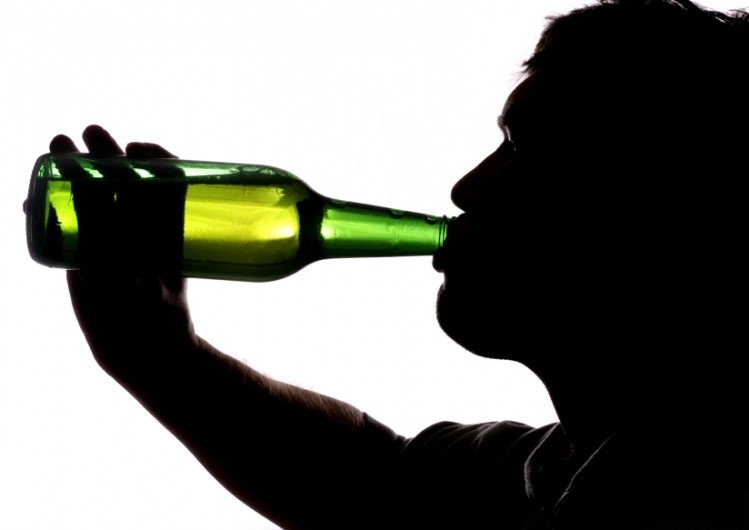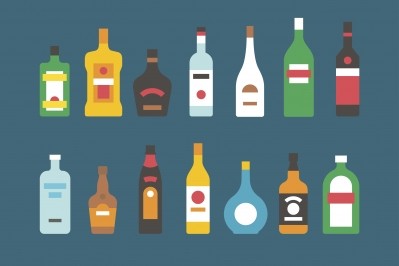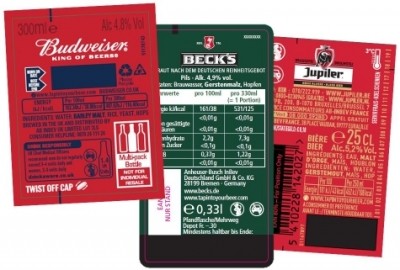Call for cigarette-style health warnings on alcohol

It says that there is an ‘alcohol health awareness vacuum’ in the UK, with less than 16% of people aware of the government’s low-risk alcohol guidelines.
In a report issued this month, it says better alcohol labeling could raise awareness and reduce alcohol related harm.
Alcohol ‘lags behind’ in providing consumer information
Under EU regulations, alcohol by volume (ABV) must be displayed on alcoholic drinks. In the UK, voluntary guidelines also include displaying units per pack or per serve, a pregnancy warning message or logo, and signposting to drinkaware.co.uk.
However, the RSPH wants to see a rethink of labeling rules, maintaining some aspects but ditching those like signposting to online information, which it deems ineffective.
It wants to see the UK government’s drinking recommendations – no more than 14 units a week – included on packs (1 alcohol unit equates to half a glass of red wine or a third of a pint of beer).
This could also include a cigarette-style health warning, either as text or with an accompanying image, or a traffic light symbol to put the number of units in context.
Shirley Cramer CBE, chief executive, RSPH, said: “If and when people choose to drink, they have the right to do so with full knowledge of both what their drink contains and the effects it could have.
“Consumer health information and warnings are now mandatory and readily available on most products from tobacco to food and soft drinks, but alcohol continues to lag behind. If we are to raise awareness and reduce alcohol harm, this must change.”
The RSPH also says that some voluntary measures used by the industry are ineffective, partly because of their lack of prominence on pack.
“ABV is the primary driver of purchasing and drinking decisions, with alcohol units insufficiently understood to facilitate their practical use – they are effectively useless without clear linkage to the Chief Medical Officers’ guidelines.
"Other health information elements, such as pregnancy warnings, are rarely noticed. This is a result of poor positioning, small size, and ineffective use of color and font.”
Key recommendations
The RSPH does note the danger of overcrowding labels and thus says that certain areas – such as ABV, alcohol units, calorie content – should be prioritized.
The RSPH’s key recommendations call for:
- Mandatory inclusion of the Government’s low-risk drinking guidelines of no more than 14 units a week, potentially including an explicit cigarette-style warning of the link with health conditions such as bowel and breast cancer. In addition, traffic-light color coding could help drinkers understand unit information in context.
- A drink drive warning on the front label – RSPH’s says explicit warnings would reach young drinkers and those in more deprived socio-economic groups.
- Calorie content per serve (or per pack) on the front label – RSPH believes this could result in an almost 10% swing in consumer purchasing decisions from the highest alcohol drinks to the lowest, within all main drink categories (beers, wines, spirits) and across all socio-economic groups. Among young (18-24) drinkers it could switch purchases from high to low alcohol drinks by as much as 20%.
- Retaining mandatory ABV information (on the front of label), which is the most widely understood and demanded piece of information by the public.
- Retaining a pregnancy warning pictogram, as recommended under UK industry guidelines.
- Retaining alcohol units per pack or per serve, as recommended under UK industry guidelines.
“While it is hoped that industry will show willing to make these improvements voluntarily, RSPH would, to ensure consistency, urge the UK Government to legislate to make these elements mandatory,” says the RSPH.
Brexit and labeling regulations
While the EU Commission has challenged the industry to find the best self-regulation proposal for calorie and nutritional labelling, the RSPH notes that Brexit may mean that Britain is left behind on labeling schemes.
The RSPH says its recommendations are informed by research, including a representative survey of almost 1,800 UK adults, originally commissioned in partnership with the Portman Group, the alcohol industry responsibility body.
However, it says the Portman Group has “since moved to make alcohol labels even less informative to the public than they are at present”, by releasing new guidance to manufacturers in September 2017 that no longer includes the Government’s low-risk drinking guidelines as a required element.
The Portman Group, however, says the report showed ‘little public interest in a radical overhaul of drinks labeling and strong opposition to cramming more information on pack’.
It says that the research supports an industry approach to developing updated voluntary guidance.
It also defends the choice to provide information online, saying: “The Portman Group remains committed to providing consumers with accurate and accessible health information. Our members promote and support Drinkaware which is recognized as the UK’s leading alcohol education charity and actively signpost people to its website for the most up-to-date guidance and advice.”
What warnings work? (and which don’t?)
Pregnancy warningsIn the UK, a logo or warning about drinking when pregnant is advised under voluntary guidelines.
“Studies in France (where pregnancy warnings are mandatory) have suggested that this element at least has contributed to heightened public awareness of the dangers of drinking alcohol while pregnant, and has helped move the social norm towards not drinking at all at this time – although this effect may be due as much to the publicity that surrounded the introduction of the measure as to the physical presence of the warnings themselves,” says the RSPH.
“Similarly, studies in the US have found that recall of these warnings among pregnant women is high, and that women in their first pregnancy were most likely to heed the warnings and reduce their drinking accordingly.”
Unit informationWhile a number of consumers recognize unit information, it may be that some consumers – especially younger drinkers – use this information for the opposite of its intended purpose (i.e., finding the cheapest products with the most alcohol), says the RSPH.
In addition, it says that “alcohol unit information is largely useless to many people unless contextualized by the Government’s guidelines”.
Online information“Using labels to direct consumers to further health information online – such as that on the Drinkaware website – is widely thought to be of limited utility compared to presenting information on the label itself, due to the conscious and proactive decision needed by each individual to access this information,” says the RSPH. “An Australian survey found that only 7% of respondents followed the address on the label to their national equivalent of the Drinkaware site”.
Calorie labelingThe European Commission has challenged the alcohol drinks industry to present a self-regulatory proposal for calorie and nutritional labelling on drinks, with the proposal due in March this year.
“While there is currently limited direct evidence for the potential impact of calorie labelling on drinking behavior, the high level of awareness and understanding of calories among the UK public makes this a worthwhile avenue for exploration,” says the RSPH.
“An RSPH survey in 2014 found that 80% of UK adults do not know or underestimate the number of calories in a large glass of wine, while more than 60% do not know or underestimate the calories in a pint of lager.
“This represents a sizeable awareness gap which, if filled, may provide a moderating impact on alcohol consumption – which accounts for an average of 8.4% of the calorie intake of people who drink – especially among more calorie-conscious demographics such as women and more advantaged socio-economic groups, who, research suggests, are already susceptible to this approach on food packaging.
“The same RSPH survey found more than two thirds (67%) of UK adults support the addition of calorie information to alcohol labels.”
Health warningsThe RSPH says that tobacco labelling has shown that explicit health warning labels – particularly pictorial ones – can be effective in raising awareness and changing behavior.
“Translating this to the alcohol context, a Cancer Research UK survey in 2015 found about 50% of people would find labels warning of the link between alcohol and cancer believable and acceptable. This could go some way to addressing a severe lack of awareness around this issue, with only one in 10 people linking cancer to alcohol consumption.”
Drink drive warnings“There is some evidence to suggest drink drive warnings may be effective, with research indicating that drinkers who have previously driven while under the influence of alcohol are significantly more likely to deliberately avoid doing so after seeing these labels,” says the RSPH. “US studies have suggested they may also help provoke a protective peer pressure effect from other adult consumers.”









